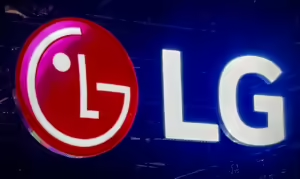LG Display reported revenue of KRW 6.708 trillion ($5.23 billion), reflecting a 28% quarter-on-quarter (QoQ) and 42% year-over-year (YoY) increase. The operating loss was KRW 94 billion ($73.3 million), a big improvement from previous quarters. The company was helped by increased shipments and mix of OLED products, particularly in the IT OLED and large OLED segments. Display shipment by area reached 6.5 million square meters, up 23% QoQ and 37% YoY, with an average selling price (ASP) per square meter of $779, nearly flat QoQ. The revenue mix for TV panels increased to 24%, IT products to 44%, and OLED products to 52%.
For Q3 2024, LG Display expects area shipment to grow by mid-single digits QoQ and ASP per square meter to remain flat. OLED panel shipments are anticipated to expand further. In a call with analysts, representatives noted that the company is focused on improving earnings through business structure upgrades and operational efficiency amidst what it sees as a volatile market conditions.
The strategic focus areas include increasing shipment and improving revenue and profit in the small mobile business, stable mass production in the IT OLED segment, and enhancing product competitiveness in the large OLED sector. The auto business is projected to grow, driven by a diversified product portfolio and strong customer relationships. Investment activities are planned at KRW 2 trillion ($1.56 billion) for the year, a significant reduction from the previous year, with a focus on essential projects that can secure early results.
The company expects the large OLED business to improve profitability by the second half of next year through product development, operational efficiency, and strategic customer cooperation. The auto business aims to grow revenue by mid-10% YoY, despite short-term volatility in the EV market.
Analysts were told that there have been rumors about the sell-off of the Guangzhou TV fab and while various options for using non-strategic assets are being considered, no specific decisions or timelines have been confirmed. Progress has been made, but the final outcome will take time.
LG Electronics’ Second Quarter Financials
LG Electronics Inc. also announced its second-quarter 2024 revenues of KRW 21.69 trillion ($16.89 billion) and an operating profit of KRW 1.20 trillion ($935.5 million), reflecting an 8.5% YoY increase in revenue and a 61.2% surge in operating profit. These figures mark new records for the highest second-quarter revenue and operating profit in the company’s history. Key drivers of this performance include the home appliance and vehicle component sectors, both achieving their highest quarterly revenues to date.
Interestingly enough, the webOS content and services business is expanding beyond TVs into IT and infotainment, with projected revenues set to surpass KRW 1 trillion ($778.8 million) this year. Additionally, the subscription business, which merges products with services, is gaining momentum. After achieving success in Korea, LG is now expanding this subscription model internationally. Last year, subscription revenue exceeded KRW 1 trillion ($778.8 million), with growth accelerating this year. In June, 36.2% of major home appliances sold at LG Brand Shops in Korea were subscription-based. This model, particularly popular among young Korean customers, is now being introduced to global markets. For example, LG has launched LG Rent-Up in Malaysia, offering subscriptions for nine products, including washing machines, dryers, and refrigerators.
The LG Vehicle Component Solutions Company achieved second-quarter revenue of KRW 2.69 trillion ($2.10 billion) and an operating profit of KRW 81.7 billion ($63.7 million). Revenue increased by 1% YoY. Despite a temporary slowdown in the EV market during this period, LG saw growth with increased demand for premium in-vehicle infotainment products and plans to continue expanding its vehicle components business.
The LG Home Entertainment Company posted second-quarter revenue of KRW 3.62 trillion ($2.82 billion) and an operating profit of KRW 97 billion ($75.6 million). Revenue increased by 15.3% compared to the same period last year, driven by a recovery in demand in Europe, a key market for premium OLED TVs. Growth also continued in the webOS content and service business. However, operating profit declined due to increased costs, including rising LCD panel prices.
Overall TV market demand is expected to show modest growth in the third quarter compared to last year, with premium OLED TVs anticipated to outperform the broader market. LG will aim to maintain operational efficiency by minimizing cost burdens, such as rising LCD panel prices, through increased sales of OLED TVs, echoing what LG Display had already said in its reporting.

